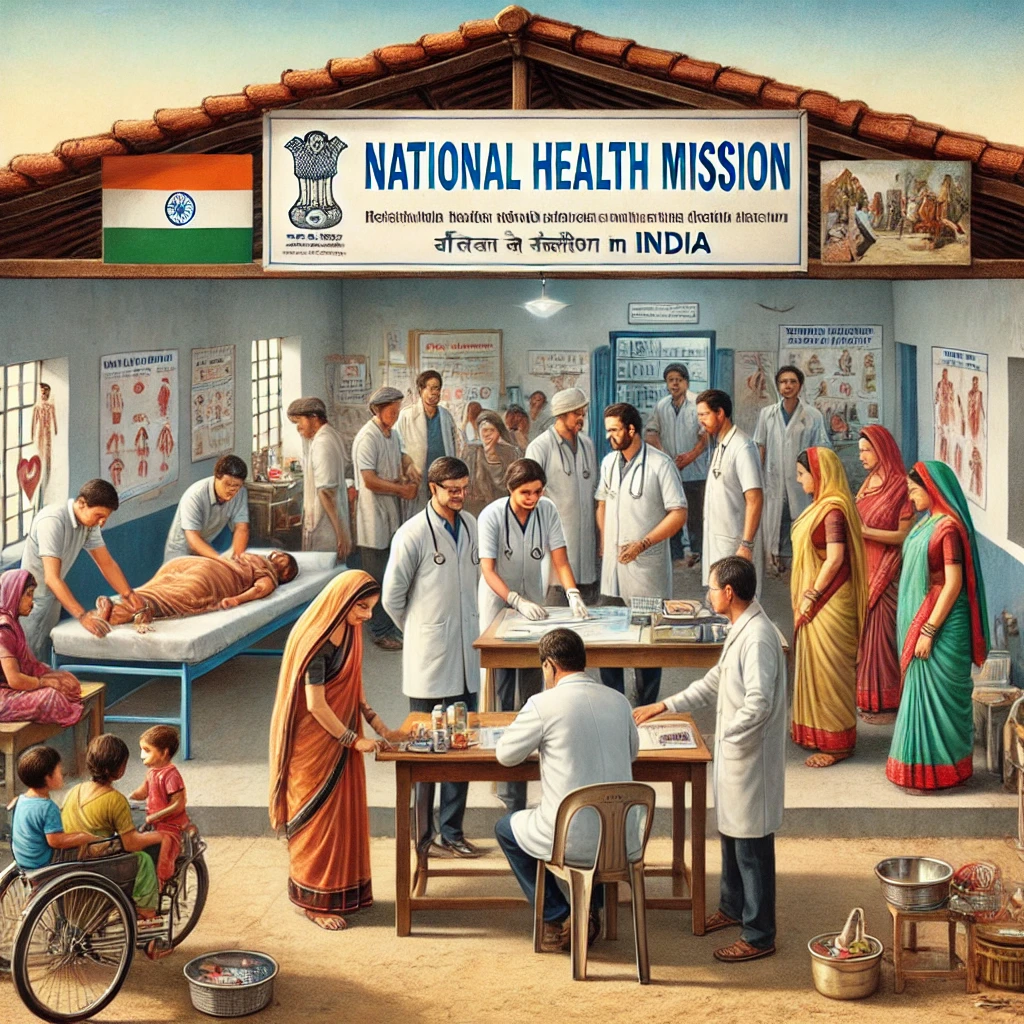On the 74th Independence Day of India, the Prime Minister announced the National Digital Health Mission. This is part of a trio of other digital advances: a new cybersecurity policy and extensive optical fiber connectivity to 600,000 villages. NDHM aims to create a complete digital health ecosystem—with Health IDs, personal health records, Digi Doctor, and a health facility registry. This digital platform run by the National Health Authority under the Ministry of Health and Family Welfare aspires to revolutionize healthcare accessibility and efficiency in India.

Governance: National Digital Health Mission
The National Digital Health Mission (NDHM) was launched on August 15, 2020, by the Prime Minister of India. This initiative aims to integrate healthcare services with other digital initiatives like cybersecurity and optical fiber connectivity. Implemented by the National Health Authority (NHA) under the Ministry of Health and Family Welfare, NDHM seeks to create a comprehensive digital health ecosystem.
Features of NDHM
Health ID
A Health ID will serve as a repository for all health-related information of an individual. Patients can create their Health IDs using basic details and their mobile or Aadhaar number. Healthcare providers, including hospitals and laboratories, will participate, ensuring a seamless flow of health information.
Personal Health Records
This module allows individuals to manage their health records digitally. It forms a crucial part of the Health ID system, providing easy access to medical history, which can lead to better healthcare outcomes.
Digi Doctor
This feature allows doctors to enroll, provide their contact details, and obtain digital signatures for free. It aims to enhance the connectivity and verification of healthcare providers, ensuring reliable medical services.
Health Facility Registry
This registry catalogs health facilities across India, making it easier for citizens to find healthcare services. It aims to improve transparency and accessibility in the healthcare sector.
Future Inclusions
NDHM plans to incorporate e-pharmacy and telemedicine services as regulatory guidelines evolve. These additions will further expand the digital health ecosystem, providing comprehensive healthcare solutions.
Background
The creation of NDHM is rooted in several strategic government initiatives aimed at transforming India’s healthcare system. The National Health Policy 2017 and NITI Aayog’s consultations have been pivotal in shaping the digital health landscape.
National Health Policy 2017
The policy envisioned a digital health ecosystem to improve health information systems. It aims to create an integrated health information system that benefits all stakeholders.
Consultation by NITI Aayog
In 2018, NITI Aayog proposed the National Health Stack (NHS) to provide a robust digital backbone for health insurance, enhancing transparency and efficiency.
National Digital Health Blueprint
Released in July 2019, this blueprint laid the foundation for NDHM, emphasizing the need for a specialized organization to facilitate a national digital health ecosystem.
Strategic Document (August 2020)
This document outlined the framework for digital registries, personal health records, and clinical decision systems, marking a significant step toward implementing NDHM.
National Health Policy 2017
The National Health Policy 2017 aims to provide assured healthcare to all citizens while addressing evolving health challenges. It emphasizes a comprehensive approach to primary healthcare and seeks to enhance the overall healthcare infrastructure.
Features
Assurance-Based Approach
The policy advocates for a progressive approach towards comprehensive primary healthcare, including services for major non-communicable diseases (NCDs), mental health, and palliative care.
Comprehensive Care
It includes a wide range of healthcare services, ensuring citizens receive holistic medical care. This includes mental, geriatric, and rehabilitative care.
Health and Wellness Centres
These centers are pivotal in delivering assured primary healthcare, making essential services accessible to all.
Free Healthcare Services
The policy ensures free drugs, diagnostics, and emergency services in public hospitals, providing financial protection to citizens.
Integration of AYUSH
The policy promotes the integration of AYUSH systems through cross-referrals and co-location, enhancing the overall healthcare delivery.
Grievance Redressal Mechanism
An effective grievance redressal system is essential for addressing patient concerns and improving healthcare services.
Health Expenditure
The policy aims to increase public health expenditure to 2.5% of GDP by 2025. This increase in funding is crucial for enhancing healthcare infrastructure and ensuring better health outcomes for the population.
Targets
Life Expectancy and Mortality Rates
The policy targets an increase in life expectancy and a reduction in infant and under-five mortality rates by 2025. These targets are essential for improving overall public health.
Resource Allocation for Primary Care
Ensuring two beds per 1,000 population and access to healthcare within the golden hour are key goals. This allocation is vital for improving emergency healthcare services.
HIV 90-90-90 UNAIDS Target
The policy aims to meet the global HIV targets, ensuring that 90% of people living with HIV know their status, receive treatment, and achieve viral suppression.
Health as a Right
Justiciable Right
Health should be recognized as a justiciable right, as recommended in the draft National Health Policy 2015. This recognition will ensure that every citizen has access to healthcare services.
Data Security and Privacy
Confidentiality Concerns
Ensuring the security and confidentiality of patient data is paramount. Robust measures must be in place to protect sensitive health information.
Lessons from NHS (UK)
Learnings from NHS
The UK’s National Health Service (NHS) experience offers valuable lessons. Addressing technical and implementation deficiencies is crucial for the successful rollout of NDHM.
Standardization and Integration
NDHM Architecture
Standardizing NDHM architecture while accommodating state-specific rules is essential. Synchronizing with government schemes like Ayushman Bharat will enhance the mission’s effectiveness and reach.
Conclusion
The National Digital Health Mission (NDHM) signifies a transformative step towards revolutionizing healthcare in India through digital means. For UPSC aspirants, understanding its implications is crucial. As we move forward, it is essential to focus on data privacy, seamless integration with existing schemes, and ensuring healthcare accessibility for all. Reflect on these aspects, as they are pivotal for future governance and policy-making.


